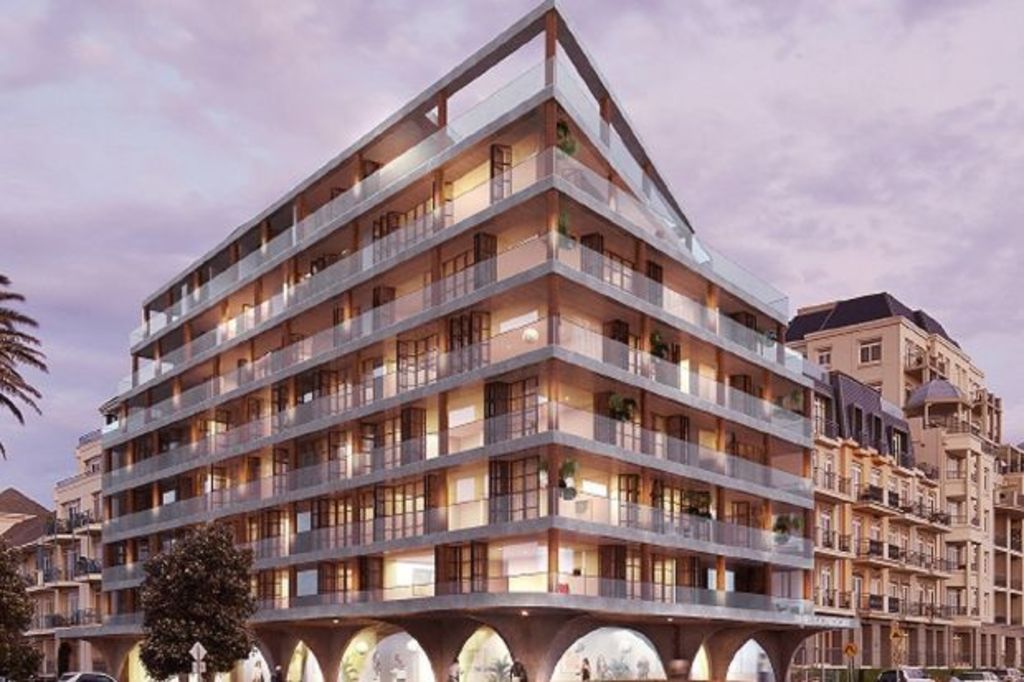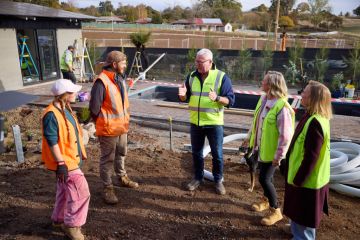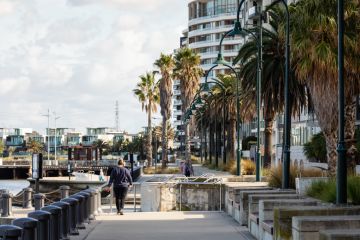Destruction of Melbourne's Corkman Hotel raises key questions about who rules heritage

It says something about the haste with which the Corkman Irish Pub was demolished last weekend, in defiance of a heritage overlay and an equally hastily-issued stop-work order from the City of Melbourne, that its website is still fully functional. The illegal razing of the 159-year-old pub — “your local pub in Carlton”, the website calls it over pictures of St Patrick’s Day revellers — has since taken on the tones of a soap opera. The most exciting instalments had the owners in damage control vowing to rebuild the pub, planning minister Richard Wynne trumpeting about regress to the Victorian Civil and Administrative Tribunal to force them to rebuild within a year, and Lord Mayor Robert Doyle totting up on ABC radio the possible fines the pair of owners face under various legislative regimes.
The destruction of the Corkman stands out as one of the worst examples of developers riding roughshod over planning controls. As the dust settles there is a broader story at play, however, that brings into focus the intersection of various planning regimes, and, underpinning them, the sometimes vexed notion of what “heritage” really means.
To begin with the bare bones of regulation, the Victorian Heritage Register provides legal protection for places and objects deemed to be of Victorian significance. Currently there are approximately 2400 buildings on the Heritage Victoria register, which means they require a permit to undertake works. Heritage Victoria executive director Tim Smith told Domain there are usually about 60 investigations each year for permit breaches, which are usually solved through negotiation. “We don’t come across blatant breaches like the Corkman — in fact we can’t recall such a case of wholesale destruction.”
Much more commonly, as is the case with the Corkman, dwellings considered to be of local significance are registered at council level through heritage overlays that might protect the facade only (the most common type of classification), or the entire building. Depending on the level of significance of the property, the classifications can overlap and intersect (on which note, it’s important to note that the National Trust’s heritage register, while influential, does not carry statutory power or impose legal obligations).
Melbourne University law students, who called the Corkman their home away from home, spent a good part of the week arguing heatedly online about the technicalities of the pub’s heritage protection. It’s little wonder, then, that to the layperson the notion of heritage appears to be a murky domain of Byzantine complexity.
A landmark 1913 Queen Anne-style residence in Toorak sent Melbourne into an outraged tizz last year, for example, when it was legally demolished after the City of Stonnington’s earlier application to then-planning minister Matthew Guy for interim heritage controls fell on deaf ears.
And it’s not difficult to find other omissions that seem regulators are out of step with community values – a case in point being The London Hotel in Port Melbourne, which also appears doomed after a bungled heritage process from Port Phillip Council, which initially deemed the 155-year-old corner pub unworthy of heritage controls before community pressure saw them unsuccessfully petitioning the Andrews government for an interim protection order.
All of these cases can be seen as examples of subjective judgment creeping into heritage protection, whether from the community, or government and council stakeholders with their hands on the levers of protection. In 2013, for example, former planning minister Matthew Guy attracted ire for refusing to protect 10 examples of Brutalist, Moderne and Modernist era buildings in the Hoddle grid of the CBD at the request of the City of Melbourne. Mr Guy refused to be drawn on the architectural styles but had previously been quoted saying he did not want to see the city “awash with structures built in the 1950s”.
“That was an outrageous case of the minister making a personal judgment about aesthetics,” says President of Melbourne Heritage Action, Tristan Davies. You often get decisions on a whim, and it’s discouraging to see people in these positions make value judgments.”
So who does get to determine heritage value? At a council level, heritage places are identified through a municipal heritage study, carried out by a heritage consultant. Usually, the community and local historical societies are invited to nominate places of potential heritage significance. These places are then assessed by professionals to determine their significance and whether they deserve state or local heritage protection. It sounds straightforward enough, but Davies makes the point that architectural styles go in and out of fashion: in the 1970s and ’80s, for example, Victorian architecture was on the collective nose and various landmark buildings were eagerly demolished.
And as the Corkman case demonstrates, in the eyes of some people, rules were made to be broken, and the deep pockets of developers mean they can factor in a fine as part of the project cost, as has been alleged during the ongoing saga of the Palace Theatre on Bourke Street, where developers started ripping out the interiors during its assessment for local heritage significance. “People who might want to change the colour of their fence might be hit hard by a fine but they mean nothing to a developer,” says Davies. “We haven’t seen too many cases of blatant illegal demolition like this, but certainly the fines aren’t enough.” (For the record, Planning Minister Richard Wynne has said the state government will investigate whether existing penalties were tough enough to deter owners from knocking down heritage buildings.)
A City of Melbourne spokesperson told Domain this week that heritage protections would be strengthened by a planned comprehensive review of built heritage in the Hoddle Grid, the first major review of heritage buildings in the CBD since the 1980s: “We are committed to undertaking an independent review based on best practice, the guidelines of Victorian State Government and the Burra Charter (a set of principles creating a nationally accepted standard for heritage conservation practice in Australia).”
Melbourne Heritage Action lobbied hard for the review, and Davies says it will help put to rest the constant arguments about what to retain: “When heritage guidelines are out-of-step with community expectation we see long and costly battles like the one being fought over the Palace Theatre, a building that should have received a higher level of protection years ago.”
We recommend
States
Capital Cities
Capital Cities - Rentals
Popular Areas
Allhomes
More







